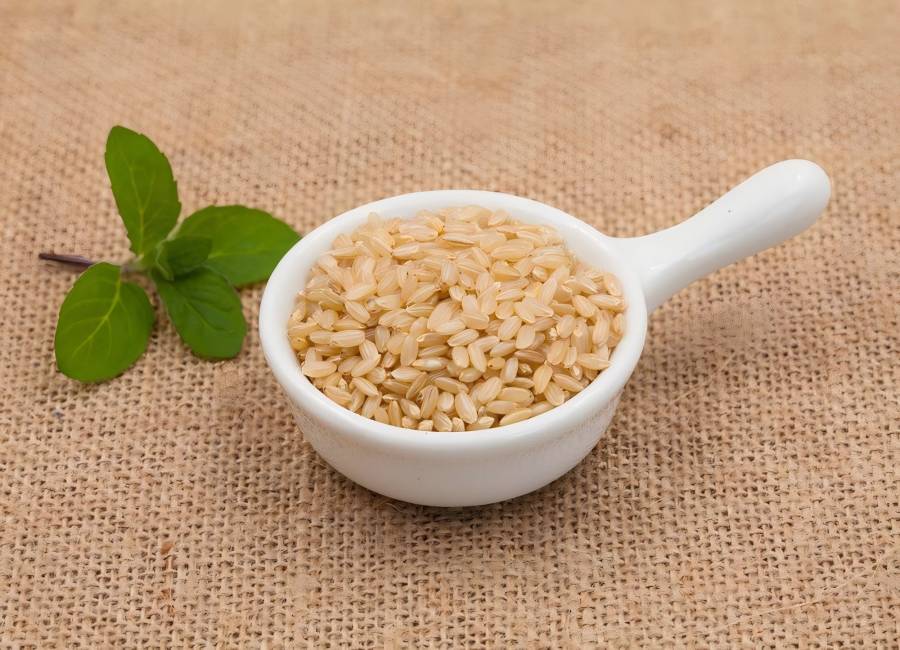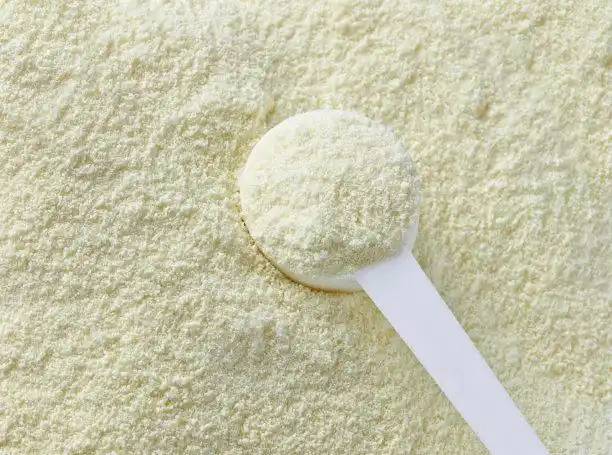What Is Wheat Protein Flour?
Wheat originated in western Asia. It is a monocotyledonous plant with a large sowing area and a wide planting range. It is the main food crop in northern China [1]. Wheat is rich in protein and is the main source of protein for the human body. Wheat protein can be used in many fields after modification, which increases the utilization value and development potential of wheat protein and directly or indirectly affects the commercial value of wheat [2]. Therefore, strengthening research on the modification of wheat protein is of great significance for expanding the scope of application of wheat protein [3].
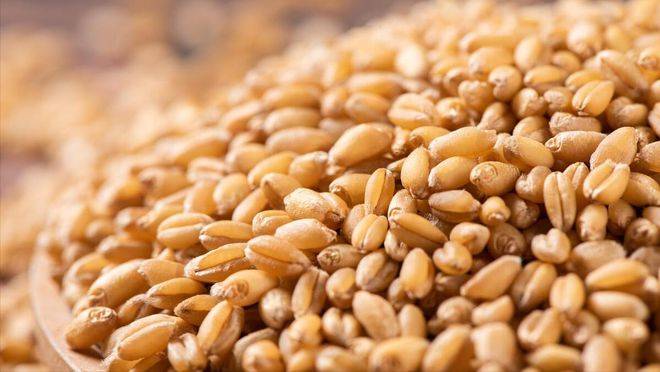
1 Research on wheat protein modification technology
As research on wheat protein intensifies, wheat protein research in multiple fields has gradually come to the public eye. How to expand the application of wheat protein in non-food fields and give it its due role urgently requires research on wheat protein modification technology to improve wheat protein quality and corresponding functions and obtain wheat proteins with specific characteristics to achieve its purpose [4]. Common modification methods include physical modification, chemical modification, biological modification and composite modification. Each of these methods has its advantages and disadvantages (see Table 1). One of the current research hotspots is the modification of wheat protein by understanding its interfacial properties.
1.1 Physical modification
Physical modification is a method that uses physical methods such as mechanical processing, ultra-high pressure, ultrasound, electric radiation, freezing, and ultra-fine grinding to change the spatial structure and physicochemical properties of proteins in food. It usually does not change the primary structure of the protein. It is time-saving, low-power consumption, cost-saving, and non-toxic to food. It can significantly improve the functional properties of wheat proteins such as solubility, foaming properties, and emulsifying properties. Ultrafine grinding technology is a method that uses mechanical or other means to break the internal forces of solids to crush the solid material, which can reduce the diameter of the solid material to about 1 μm, reaching the level of ultrafine powder [5].
Cheng Min et al. [6] used wheat as the raw material and processed it with the help of ultrafine grinding technology. They studied the changes in the solubility, emulsifying properties, and performance of wheat gluten protein before and after grinding and found that as the particle size decreased, the emulsifying properties of wheat gluten protein improved, foam stability was better, protein solubility was significantly improved, and mercapto group content was significantly reduced. It is speculated that the changes in the solubility, foaming properties, and emulsifying properties of wheat gluten protein are due to the formation of disulfide bonds during the treatment process as a result of the oxidation of the mercapto group, thereby improving the overall quality of wheat gluten protein.
WANG et al. [7] studied the effect of freezing on wheat protein through circular dichroism experiments and trace flour blending experiments and found that for the secondary structure of the protein in flour products, depolymerization occurs after freezing, the network structure becomes loose, and the strength of the network structure and rheological properties decrease over time. The relative molecular mass of gluten protein decreases, thermal stability decreases, there is no significant change in free amino groups, and free sulfhydryl groups increase. The decrease in the relative molecular mass of gluten protein relative molecular mass decreased and the breaking of disulfide bonds led to the depolymerization of macromolecular proteins [8].
Liu Guoqin et al. [9] studied the effect of dynamic high-pressure microjet (DHPM) on wheat protein and found that microjet can increase the solubility of wheat protein. After treatment, the emulsifying properties and dynamic rheological properties are significantly improved. After SDS-PAGE and DSC mapping analysis [10], it was found that the diameter of wheat protein decreased, and the macromolecular mass subunits were broken down into small molecular subunits, making the space more compact, which in turn affected the solubility, foaming properties and emulsifying properties of wheat protein.
Wang Weijun et al. [11] discussed the mechanism of the effect of light quanta on wheat protein, and showed that light quanta can effectively prevent the decrease in solubility, emulsifying properties and other properties of wheat protein during storage, ensuring the functional properties of wheat protein; Huang Wei et al. [12] studied the effect of ultra-high pressure on wheat protein. The experiment showed that the solubility of gluten protein was positively correlated with the increase in pressure. Within the range of 2 00 to 400 MPa, the foaming properties of gluten protein improved significantly, but when the pressure was greater than 600 MPa, the opposite was true. The emulsifying properties tended to first increase and then decrease with increasing pressure, and the digestibility of wheat protein could also be effectively improved. Qian Jianya et al. [13] found that ozone could reduce the interfacial tension of wheat protein and change the rheological properties of gluten protein, significantly improving its solubility, water retention significantly improved. There have been many studies on the physical modification of wheat protein, and they are gradually deepening. It is believed that wheat protein will play a key role in the application of wheat in other fields in the future.
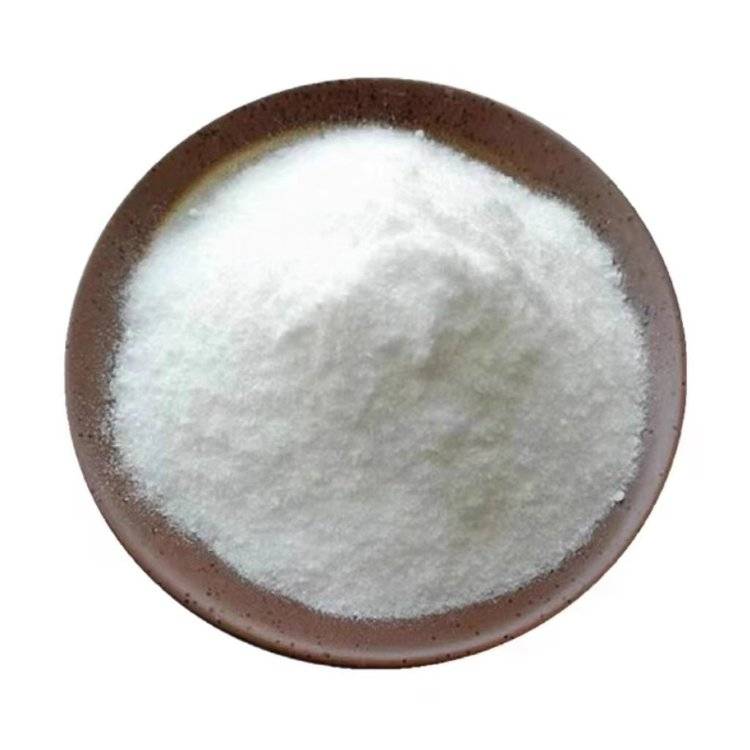
1.2 Chemical modification
Chemical modification is achieved by treating proteins with chemicals to cause cleavage or polymerization reactions of the internal groups and polypeptide chains, thereby significantly changing the spatial structure and physicochemical properties of the protein to achieve the purpose of directional modification of the functional properties of the protein. At present, wheat proteins are often chemically modified using phosphorylation, hydrolysis, acylation, glycosylation, etc.
Ma Qingbao et al. [14] reviewed the changes in wheat protein after treatment with ammonium triphosphate. After phosphorylation, wheat protein becomes a protein with high emulsifying properties. Jiang Lifeng et al. [15] found through analysis with a particle size analyzer that after sodium sulfite is used on wheat protein, the disulfide bond in the protein molecule breaks to form a free sulfhydryl group, the protein structure becomes loose, and the disulfide bond breakage causes the protein particles to become smaller, with an increased specific increases, and the tertiary structure is destroyed because the protein particles cannot cross-link together.
Gong Benqian et al. [16] found that emulsifiers have different effects on flour products processed in different ways. During the mixing stage, they enhance the elasticity and flexibility of the dough; during the proofing stage, they accelerate yeast fermentation and improve the dough's ability to retain gas; and during the steaming and baking stages, they improve the quality of wheat products by increasing the anti-aging ability of high-surface products. Ren Shuncheng et al. [17] used fluorescence spectroscopy to confirm the fluorescent fluorescence quenching effect; Zhang Dexin et al. [18] determined the optimal process conditions for hydrochloric acid treatment of wheat protein, that is, at 65 °C, hydrochloric acid: 8% gluten powder is 3.5:100, and hydrochloric acid can significantly improve the solubility and other physical and chemical properties of wheat protein. Although chemical modification is easy to operate and the results are significant, it produces many toxic side effects that affect food safety [19].
1.3 Biological modification
The biological method currently mainly uses enzymes for modification. Enzyme modification is a way in which proteases catalyze the hydrolysis of proteins under suitable conditions, thereby changing the molecular structure, function and properties of the protein. It has the advantages of high efficiency, no toxic by-products and an easy-to-control process. Enzyme modification can give the enzymatic products a variety of functions, such as lowering blood pressure, anti-oxidation, anti-fatigue and improving immunity [20].
Enzyme modification mainly includes three types: deamidation modification, enzymatic hydrolysis and enzyme cross-linking modification [21]. Among them, enzyme cross-linking modification technology is the most widely used and can effectively improve the structure and function of proteins. Some scholars used pepsin, trypsin and alkaline protease to treat wheat protein separately [22], and found that the hydrolysis degree and digestibility of wheat protein were significantly improved, among which alkaline protease had the most significant effect. After SDS-PAGE and DSC mapping analysis, it was found that with the increase of hydrolysis degree, the content of small molecular peptides gradually increased [23]. The use of enzymes to modify wheat proteins has natural advantages and provides a good basis for expanding the application range of wheat proteins.
1.4 Composite modification
Composite modification is a method of combining several modification methods together to modify proteins according to actual conditions. It can integrate the advantages and disadvantages of various modification methods to complement each other's advantages, thereby achieving a better modification effect [24]. When wheat protein is physically modified, the tensile strength of the membrane is often reduced due to thermal denaturation. If enzyme modification is combined with physical modification, the peptide bonds of wheat protein polypeptides can be broken by fungal fermentation, enhancing the solubility of wheat protein and thereby improving the emulsifying and solubility deficiencies of wheat protein in physical modification [25]. The composite modification of wheat protein has the unique advantages of several modification methods, and can avoid its disadvantages. It can achieve multiple effects with one action, and will definitely be used more and more in the future.
1.5 Modification using the interfacial properties of wheat protein
Tschoegl et al. [26] found that wheat protein films are stable and pressure-resistant. Since then, there has been little research on the interfacial properties of wheat flour proteins. At present, many of the protein functional technologies that are known are based on empirical judgments. With the development of genetic engineering and plant breeding technology, people can link the chemical properties of proteins to their functions at the molecular genetic level, and further modify them in a targeted manner to obtain ideal modified protein peptides [27]. The main surface-active component of wheat is protein, accounting for 7% to 20%.
Several groups on the protein molecule can interact with the interface at the same time. If the protein does not fold during the interaction, the entropy will increase, creating a driving force for adsorption at the wheat protein interface, which can further stabilize the film and produce a dynamically stable protein interfacial layer [28]. The surface film equilibrium technique is mainly used to study the properties of the wheat protein interface. Microscopic observations have found that the interface properties of wheat protein particles undergo strange changes under the conditions of heating and pressurization. The total area of the gas-liquid interface increases, and hydrophobic groups and free sulfhydryl groups are also exposed.
Wheat protein will produce fibrils under this treatment. The amino acid composition of the fibrils formed is similar to that of glutenin, and the process occurs immediately after exposure to air and and completed within 5 s [29]. Understanding the interfacial properties of wheat proteins and the interfacial changes at high temperatures and applying them to modification research will be more conducive to the comprehensive development of the utilization of wheat proteins. However, research in this direction has been hindered by the difficulty of obtaining pure, intact wheat proteins. With the improvement of technology and equipment, the use of research on the surface properties of wheat flour proteins to further increase the understanding of wheat proteins is favored by the scientific community, with broad prospects and challenges [30].
2 Research on the application of modified wheat protein
With the progress of science and technology and the deepening of research, the research and utilization of wheat protein in many fields has also developed. By modifying wheat protein through physical, chemical and enzymatic methods, protein products with different functional properties can be obtained, which also play an important role in many fields (see Table 2), greatly enriching the value of wheat protein.
2.1 Wheat protein as a target antigen in some diseases
2.1.1 Autism in children
Autism spectrum disorders are a group of diseases caused by neuroimmune genetic factors or environmental factors such as infections and toxic chemicals. The clinical manifestations include social interaction disorders, communication disorders, narrow interests, repetitive behavior patterns, and intellectual disabilities [31]. Recent studies have found that wheat protein can be used as a target antigen for autism in children. Aristo Vojdani et al. [32] detected antibodies to alpha-lipo protein in children with autism. Analysis of their blood samples showed that most children with the disease produced IgG and IgA antibodies against alpha-lipo protein 33-peptide. Later, 48 children with ASD were tested for IgG and IgA antibodies to gluten and non-gluten proteins in their serum were detected. Data analysis showed that [33], 16 of the 48 samples (about 33%) strongly reacted with a mixture of wheat protein and α-lactalbumin 33-peptide, and 12 samples (about 25%) reacted with anti-gluten protein IgG. IGA had the strongest immunoreactivity to the wheat protein mixture, followed by CXCR3-bound albumin, which verifies the role of wheat protein as a target antigen in childhood autism.
2.1.2 Crohn's disease
Crohn's disease is an inflammatory bowel disease of unknown cause, often occurring in the terminal ileum. Clinical manifestations include abdominal pain, diarrhea, fever and other symptoms. The disease cannot be cured at present and is prone to recurrence, so there is concern about how to quickly detect the disease. Some people used the ELISA method to determine the IgG and IgA antibodies to gluten and non-gluten proteins in the serum of Crohn's disease patients and found [34] that for IgG antibodies, at an OD value of 0.5, about 46% of the samples reacted with the wheat protein mixture, and about 38% of the samples reacted strongly with both gluten proteins and non-gluten proteins. Compared with IgG, the detection rate of IgA-positive specimens from Crohn's disease patients is much lower, with gluten protein CXCR3 binding to the alcohol-soluble protein peptide being the strongest [35]. Research in this area on wheat proteins provides a new idea for the rapid detection of the disease.
2.1.3 Celiac disease
Celiac disease, also known as gluten enteropathy, is a primary intestinal malabsorption syndrome caused by the body's intolerance to gluten. Patients with the disease excrete excessive fat in their stools, experience malnutrition, lose weight, and have symptoms such as fever and edema. In severe cases, the disease can lead to osteoporosis or intestinal malignant tumors. Due to the overlap in symptoms between Crohn's disease and CD, Huebener et al. [36] measured the serum IgG and IgA against various wheat antigens and related peptides in patients with Crohn's disease to examine the possibility of immune responses to non-gluten proteins, rather than gluten proteins.
Compared with healthy controls, it was found that the IgG antibodies in the serum of Crohn's disease patients were highly elevated in 38% of the test samples against gluten and non-gluten antigens were highly elevated in 38% of the test samples, and IgA antibodies were also strongly reactive to gluten and non-gluten antigens. Siniscalco et al. [37] detected IgG and IgA antibodies to gluten and non-gluten proteins in the serum of celiac patients. They found that, within a certain range of OD values, IgG antibodies were most reactive to CXCR3-bound alcohol-soluble protein peptides, followed by a mixture of wheat proteins and serines. Most samples had strong reactions to both gluten and non-gluten proteins. Detection of IgG or IgA antibodies against wheat protein provides the most sensitive method for detecting immune responses to wheat in celiac disease patients.
2.2 Wheat protein application in cosmetics
Hydrolyzed wheat protein is widely used in cosmetics because of its water retention. Wheat protein is hydrolyzed with enzymes such as papain or by acid-base hydrolysis to obtain a final product of 25% wheat hydrolysate [38]. Hydrolyzed wheat protein is mild, non-irritating, has strong affinity for the skin, and can be used on sensitive skin. It can also be used as a skin and hair conditioner [39]. There have been many reports on hydrolyzed wheat protein in cosmetics in recent years, reaching 107 7 articles, half of which are used in non-hair dye products [40].

A Japanese company has already tried adding hydrolyzed wheat protein to spray skin care products and skin fresheners [41]. Hydrolyzed wheat protein used in cosmetics can cause allergic reactions and urticaria in some people. A foreign study compared 16 patients with contact allergic reactions and found that [42] all 16 patients used the same kind of soap containing hydrolyzed wheat protein. Skin prick tests showed that 0.1% soap solution in saline and 0.1% hydrolyzed wheat protein in saline were positive. . However, urticaria caused by wheat protein in cosmetics is not common [43]. The use of wheat protein in cosmetics is actively being explored, and it is believed that a deeper understanding will gradually be gained.
2.3 The protective effect of wheat protein on the human gastrointestinal tract
Gastrointestinal diseases are common in our lives, and more and more people are suffering from them, especially among middle-aged and elderly people. If not treated in time, they may even develop into cancer. Typical gastrointestinal diseases include gastric ulcers, chronic enteritis, gastric bleeding, gastric perforation, etc. [44]. Hydrolyzed wheat protein peptides obtained by enzymatic or acid-base hydrolysis of wheat protein have immunomodulatory activity, inhibit cancer and inhibit peptidyl dipeptidase A activity [45].
The intestinal epithelium is a physical and biochemical barrier composed of a layer of epithelial cells that determines the boundary between intestinal tissue and the external environment. A complete intestinal epithelium provides the best protection. Intestinal goblet cells are a special type of secretory cell located in the epithelium. They are responsible for the production of mucins, which prevent large particles and bacteria from invading the epithelial cell layer. Carmela et al. [46] compared the effects of ordinary bread and wheat hydrolysate bread on the secretion of human intestinal goblet cells in the intestinal epithelium. secretion, and the barrier function of the cell monolayer was assessed by measuring the trans-epithelial electrical resistance (TEER).
It was found that wheat protein peptides increased mucin secretion. Given that intestinal microorganisms can also regulate goblet cell function and the intestinal mucus layer, it is inferred that the production of intestinal epithelial mucus is not only related to the direct effect of wheat protein peptides themselves, but may also be the result of intestinal microbiological regulation caused by wheat protein peptide regulation. Yang Xian et al. [4 7] found through mouse experiments that wheat active peptides can significantly improve alcoholic gastric mucosal damage in mice, improve gastrointestinal digestion and absorption, promote gastrointestinal epithelial cell growth, and can play a gastrointestinal protective role. The regulatory and protective mechanism of wheat protein peptides on the gastrointestinal tract has gradually attracted public attention, and it is believed that there will be rapid progress in the near future.
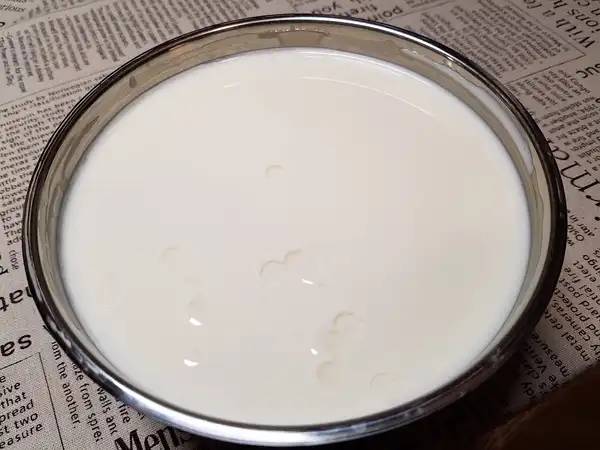
2.4 Wheat gluten peptide promotes yogurt fermentation
Yogurt is increasingly popular due to its high nutritional value, unique flavor and health benefits. In recent years, it has been discovered that wheat gluten peptides can replace some milk proteins for fermentation, which has expanded the application of wheat gluten. Liao Lan et al. [48] obtained wheat gluten peptides by proteolytic digestion of wheat and studied their fermentation-promoting mechanism.
Through sensory evaluation, it was found that wheat protein peptides treated with three enzymes can effectively promote yogurt fermentation. The longer the enzymatic hydrolysis time, the better the fermentation-promoting effect, and the shorter the time to reach the end of fermentation. The acidity of the finished yogurt is within the normal range. This is because wheat protein peptides increase the content of free amino acids and peptides in fermented milk, enhancing the reproduction and acid production of fermenting agents. Xu Xin et al. [49] ultrafiltered different molecular peptide samples of wheat wheat protein fermentation experiment, ultrafiltration was performed on samples of wheat protein with different molecular peptide segments, and it was found that peptides in all mass segments had good fermentation-promoting abilities, but the fermentation-promoting abilities of peptides in different mass segments differed significantly, and the smaller the molecular mass segment, the stronger the fermentation-promoting ability.
2.5 Clarifying effect of wheat protein
Fruit wine is made from fermented fruit and is very popular. However, turbidity often occurs during processing, transportation and storage, which seriously affects the sensory quality of the wine. The main reason for the turbidity of fruit wine is that polyphenolic compounds combine with proteins to form large molecular polymers. Currently, commonly used precipitating agents in the processing of fruit wine include bentonite and gelatin, but these have many problems: bentonite can play a clarifying role in the production of fruit wine, but when used in excessive amounts, the clarifying effect is obvious but the taste decreases; gelatin poses a safety risk to the human body [50]. Some studies have shown that the use of wheat protein in fruit wine processing reduces the content of floating particles in the fruit wine, has a clarifying effect, and is low in cost, non-toxic, harmless, and poses no safety risks to the human body [51].

Huang Huihua et al. [52] used wine as a sample to study the clarifying effect of wheat protein, and proposed that the turbidity of fruit wine and fruit juice is caused by the interaction of protein and polyphenols. Some scholars treated turbid wine with soybean protein, lentil protein, and wheat protein, respectively, and the results showed that wheat protein had a better clarifying effect [53]. Wheat clarifying protein was prepared using de-alcoholized wheat flour [54], and experiments were carried out to clarify fruit wine, which verified that the turbidity of fruit wine that the turbidity is caused by the combination of polyphenolic compounds and proteins in the wine to form large molecular compounds. The wheat protein used to clarify the wine has the advantages of being safe, harmless, widely available, low cost, and highly effective in clarifying. It can maintain the quality of the wine to the greatest extent and is a good choice for clarifying fruit wine.
2.6 Wheat protein as edible packaging film
Wheat protein has good ductility and film formability, is inexpensive, degradable, and does not pollute, meeting society's need to protect the environment. It can be widely used in packaging fresh fruit products, meat products, and various fried foods [55]. Wheat gluten protein is treated with an acid-base process to dissociate its subunits and expose hydrophobic groups, which then form a three-dimensional network structure through interactions of hydrophobic and disulfide bonds. Under suitable conditions, edible membranes can be obtained [56].
However, its mechanical strength is poor, water resistance is weak, and it is prone to cracking, which greatly limits its practical application in production and makes it difficult to meet industrial production standards and achieve practical commercial application on a large scale. Cong Xu et al. [57] designed and produced a wheat protein film packaging experiment using instant noodle seasoning packets as a model, and studied the effects of pH, protein content, and ethanol volume fraction on the properties of the wheat gluten protein film. It was found that when the protein content was 10.70%, the pH was 11.25, and the ethanol volume fraction was about 56.70%, the wheat gluten protein edible film had the highest performance. After After 45 days of storage, the appearance of both the imitation convenience flour package and the vegetable package was intact and undamaged, and indicators such as the acid value met the requirements of the national standard. This provides a basis for edible packaging solutions made from wheat protein.

3 Summary
Research on wheat protein at home and abroad has been extensive and in-depth, especially on the relationship between wheat protein and the quality of wheat products. However, there has been less research on the interfacial properties of wheat protein. The development of wheat protein in other fields has improved the utilization rate of wheat and increased its commercial value. However, the research on some modification mechanisms of wheat protein is not yet in-depth. In the future, research on the interfacial properties of wheat proteins should be increased, and their interfacial properties should be used to deepen the understanding of wheat protein modification; various methods of wheat modification should be explored, the mechanism of wheat proteins in multiple fields should be strengthened, the scope of wheat applications should be expanded, and the commercial value of wheat should be increased to obtain maximum economic benefits.
Reference:
[1]WANG X L ,SUN J M. Status and outlook of wheat con- sumption in China[J].Journal of Triticeae Crops,2015,35 (5) : 655-661
[2]LIU T. Exploration of deep processing of wheat bran[J]. Modern Flour Milling Industry,2018,32( 1) :42-43
[3]WANG J ,HUANG W X ,LI M ,et al. The application of multivariate data analysis to determine the geographical origin of wheat flour[J].Chinese Journal of Food Hygiene,2018, 30( 1) : 68-73
[4]WANG L,GE L.Current status of production and application of wheat hydrolyzed protein[J].Feed and Animal Husband- ry,2016( 1) :47-49
[5]GAO G X,GUAN E Q,LI M M,et al.Effect of superfine comminution on functional property of soybean protein[J]. China Oils and Fats,2018,43 (3) : 30-34
[6]CHENG M,LIU B G ,WANG P ,et al. Research progress on superfine grinding technology of wheat bran [J].Journal of Henan University of Technology ( Natural Science Edi- tion) ,2017(6) : 123 -130
[7]WANG Q ,LI Y ,SUN F S ,et al.Tannins improve dough mixing properties through affecting physicochemical and structural properties of wheat gluten proteins[J].Food Re- search International,2015 (69) : 64-71
[8]AHMED.Effect of barley β - glucan concentrate on oscilla- tory and creep behavior of composite wheat flour dough[J]. Journal of Food Engineering,2015 ( 152) : 85-94
[9]LIU G Q,YAN N J ,CHEN L Y.Founctional properties of wheat gluten influenced by dynamic high pressure microfluidi- zation treatment[J].Modern Food Science and Technology, 2013 (5) : 936-940
[10]XU Y H,ZHAO G Y,JING S Q,et al.Effect of high pres- sure microfluidization on chemical properties and structure of soybean protein isolate[J]. The Food Industry ,2018,39 (3) :44-48
[11]WANG W J,CHE Y X,LIU X L,et al.Study on effect of light quantum on functional properties of wheat gluten [J]. Food Research and Development,2016,37( 15) : 6-9
[12]HUANG W.Study on modification and application of wheat gluten protein by ultra high pressure[D].Tianjin : Tianjin University of Science&Technology,2016
[13]QIAN J Y,WU Q Y,GAO X Y.Effect of ozone on func- tional and rheological properties of wheat gluten protein[J]. Journal of Researches on Dietetic Science and Culture, 2017,34( 1) : 51-55
[14]MA Q B,WANG Y H,LIU Z D,et al.Advances in phos- phorylation modification of food proteins[J].Journal of An- hui Agricultural Sciences,2017,45 ( 1) : 99 -101
[15]JIANG L F,LIU Y,YU G.Effect of corncob residue pre- treatment by sodium sulfite on lignin removal and cellulose hydrolysis[J].Chinese Journal of Bioprocess Engineering, 2016,14(2) : 58-63
[16]GONG B Q,LIU Z D,YANG Y M,et al.The influence of emulsifiers on retrogradation properties of waxy wheat starch [J].China Food Additives,2012(2) : 81-85
[17]REN S C,SUN X S,CHEN R X.Fluorescence quenching of wheat protein by rutin and quercetin [J]. Journal of Henan University of Technology(Natural Science Edition) , 2017,38(4) : 1-5
[18]ZHANG D X.Studies on quality improvement in wheat glu- ten's physical and chemical properties by hydrochloric acid treatment[J].Food and Machinery,2012,28(2) : 23-26
19]XU P C,WANG Y S,CHEN H H,et al.Effect of prepara- tion methods on thermal properties and digestibility of wheat starch-oleic acid inclusion complexes[J].Food Science, 2017,38(3) :7 -12
[20]WAN N T,WANG Z G,MEI L,et al.Lipid oxidation,de- composition during enzymatic preparation of the 1,3 -dia- cylglycerols from lard[J]. Journal of the Chinese Cereals and Oils Association,2018( 1) : 92-96
[21]YU L Y,QIAO M W,LI X L,et al.Optimization of com- pound enzymatic glycosylation of soybean protein isolate by response surface methdology [J]. China Oils and Fats, 2018,43 (4) : 28-32
[22]HU X L,BU G H.Effects of combination of high pressure homogenization and enzymatic modification on the antigeni- city and structure of soybean protein isolates [J].Journal of Henan University of Technology ( Natural Science Edition) , 2018,39(6) : 29-35
[23]WANG S L. Effect of enzymatic modification of glutinous rice starch on its physicochemical properties[D]. Hefei : Anhui Agricultural University,2018
[24]CHEN N N,ZHU Y Y,YANG L Y,et al.Preparation and characterization of cross -linking composite films based on sodium alginate and pomelo pectin[J]. China Food Addi- tives,2018,170(4) : 124 -133
[25]SUN S L,LIU P F ,QIN Y,et al.Effects of modification methods and maleic anhydride content on the properties of starch /polyhydroxyalkanoate composite films[J].Food Sci- ence,2018,39(7) : 221-229
[26]TSCHOEGL N W,ALEXANDER A E.The surface chemis-try of wheat gluten I. Surface pressure measurements[J]. Journal of Colloid Science,1960,15 (2) : 155 -167
[27]SUN H,ZHAO X Y. Research progress of wheat peptides and application[J]. Science and Technology of Cereals, 2018,26(2) : 11 -16
[28]KENDALL S K.Encyclopedia of life sciences[J].Biotech Software and Internet Report,2009,13 (3) : 19-21
[29]LIU G,HU S Q,ZHANG T T ,et al. Gene cloning ,ex- pression and characterization of protein disulfide isomerase from wheat[J].Food Science,2017,38(2) : 25-32
[30]SARKAR A,ADEMUYIWA V,STUBLEY S,et al.Pick- ering emulsions co -stabilized by composite protein / poly- saccharide particle particle interfaces : Impact on in vitro gastric stability[J].Food Hydrocolloids,2018 (84) : 282 - 291
[31]FERRI S L,ABEL T ,BRODKIN E S.Sex differences in autism spectrum disorder : a review[J].Current Psychiatry Reports,2018,20(2) : 9
[32]VOJDANI A ,VOJDANI E. Gluten and non -gluten pro- teins of wheat as target antigens in autism,Crohn's and ce- liac disease[J]. Journal of Cereal Science ,2017,75 : 252-260
[33]ANNE B ARNETT,SANDY T,RAPHAEL A B.The state of research on the genetics of autism spectrum disorder : methodological,clinical and conceptual progress[J]. Cur- rent Opinion in Psychology,2019(27) : 1-5
[34]CHOI J,KANG B,KIM M J,et al.Early infliximab yields superior long - term effects on linear growth in pediatric crohn's disease patients.[J]. Gut and Liver ,2018 ,12 (3) : 255-262
[35]ZHANG X,KO H M,TORRES J,et al.Luminally-polar- ized mural and vascular remodeling in ileal strictures of Crohn' s Disease.[J]. Human Pathology ,2018 ( 79 ) : S0046817718300819
[36]HUEBENER S,TANAKA C K,UHDE M,et al.Specific nongluten proteins of wheat are novel target antigens in celi- ac disease humoral response[J].Journal of Proteome Re- search,2015,14( 1) : 503-511
[37]SINISCALCO D,SCHULTZ S,BRIGIDA A,et al.Inflam- mation and neuro-immune dysregulations in autism spectrum disorders [J].Pharmaceuticals,2018,11 (2) :56-67
[38]YAGAMI A,AIHARA M,IKEZAWA Z,et al.Outbreak of immediate -type hydrolyzed wheat protein allergy due to a
facial soap in Japan[J].Journal of Allergy & Clinical Im- munology,2017,140(3) : 879-881
[39]BURNETT C ,BERGFELD W F ,BELSITO D V ,et al. Safety assessment of hydrolyzed wheat protein and hydro- lyzed wheat gluten as used in cosmetics[J]. International Journal of Toxicology,2018,37( 1_suppl) : 55S
[40]AGB W,ROMBOUTS I,FIERENS E,et al.Enzymatically hydrolyzed wheat gluten as a foaming agent in food : Incorpo- ration in a Meringue Recipe as a Proof -of -Concept[J]. Journal of Food Science,2018,83 (8) : 2119-2126
[41]HOFFMANN S ,KLEINSTAEUER N.Non -animal meth- ods to predict skin sensitization ( I) the Cosmetics Europe database[J]. Critical Reviews in Toxicology ,2018 ,48 (5) : 1
[42]ZHANG Y,ZHANG R , ZHANG H ,et al. Preparation of rabbit hair keratin and its application in sunscreen cosmetics [J].Natural Product Research and Development,2018,30 ( 1) : 120 -126
[43]MA L,TAN Y M ,CHENG Y ,et al.Evaluation methods for the applicability of facial sensitive skin cosmetics[J]. Chinese Journal of Dermatovenereology of Integrated Tradi- tional and Western Medicine,2018,17( 1) : 1-5
[44]SUN H,ZHAO X Y. Research progress of wheat peptides and application[J]. Science and Technology of Cereals, 2018,26(2) : 11 -16
[45]GUO J J,MA Q Z,KANG H Q,et al.Property analysis of resistant wheat amylose and amylopectin with wheat gliadin [J].Transactions of the Chinese Society of Agricultural En- gineering,2018,34(4) : 293-298
[46]CARMELA L ,DANIELA M ,HENDERSON M E ,et al. Temperature -treated gluten proteins in gluten -friendly bread increase mucus production and gut-barrier function, in human intestinal goblet cells[J].Journal of Functional Foods,2018(48) : 507-514
[47]YANG X,WANG Y Y,WANG F,et al.Effect of hydro- lyzed wheat protein peptide on ethanol -induced acute gas- tric mucosal damage in rats[J]. Food Science ,2016,37 ( 13) : 178 -182
[48]LIAO L,XIE Z L,NI L.Studies on fermentation character- istic of yogurt using wheat gluten peptides.Journal of Chi- nese Institute of Food Science and Technology,2017,17 (8) : 126 -131
[49]XU X,ZHAO M M,LIN W F,et al.Study on the evalua- tion of ultrafiltration effect of sodium caseinate hydrolysate by HPSEC[J]. Science and Technology of Food Industry, 2005,26(8) : 54-56
[50]JAGTAP U B ,BAPAT V A.Wines from fruits other than grapes : current status and future prospectus[J].Food Bio- science,2015 (9) : 80-96
[51]LI J J,ZHANG L Z,LV G T,et al.Wheat protein fining of cherry wine[J].Food Science,2018,39(3) : 104 -109
[52]XU G Q,ZHANG Z W,GUO A Q,et al. Rapid and micro- determination of total polyphenol in grape and grape wine [J].Food Science,2010,31 ( 18) : 268-270
[53]HUANG H H,WANG Z,CHEN J X.Study on the influen- cing factors of polyphenol -protein complexation[J].Food Science,2003,24(2) : 22-25
[54]GRANATO T M ,NASI A ,FERRANTI P ,et al. Fining white wine with plant proteins : effects of fining on proantho- cyanidins and aroma components[J]. European Food Re- search and Technology,2014,238(2) : 265-274
[55]TONG Y.Study on wheat gluten-based edible films impro- ving and film-forming mechanism[D].Shenyang : Sheny- ang Agricultural University,2012
[56]SUI C ,ZHANG W ,YE F ,et al. Preparation ,physical, and mechanical properties of soy protein isolate /guar gum composite films prepared by solution casting[J].Journal of Applied Polymer Science,2016,133 ( 18) :43382
[57]CONG X,LIU R , LIU Y,et al.Preparation of edible wheat gluten film and its application to seasoning package[J]. Journal of Tianjin University of Science & Technology, 2018,33 (3) : 9 -17.


 English
English French
French Spanish
Spanish Russian
Russian Korean
Korean Japanese
Japanese